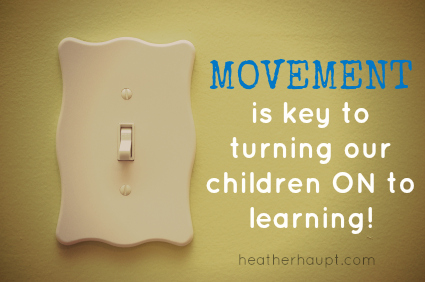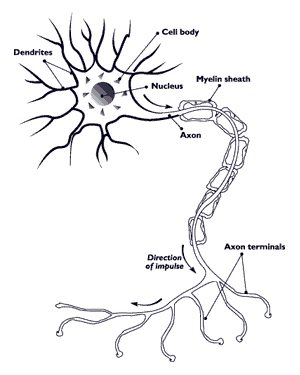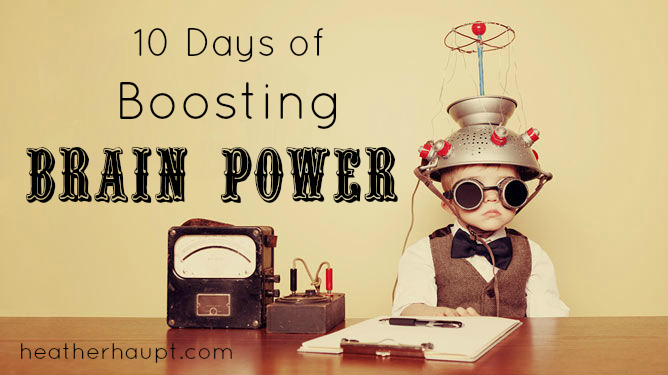 During my 1st grade year, I attended a nice private school. When my mom went to visit one day, she discovered that I had been placed in the back corner of the classroom. Every 10-15 minutes I would quietly get up and walk a lap around my desk before sitting back down. The teacher didn’t seem to mind too much, but put me in the back of the classroom so I wouldn’t disrupt the other students.
During my 1st grade year, I attended a nice private school. When my mom went to visit one day, she discovered that I had been placed in the back corner of the classroom. Every 10-15 minutes I would quietly get up and walk a lap around my desk before sitting back down. The teacher didn’t seem to mind too much, but put me in the back of the classroom so I wouldn’t disrupt the other students.
Now not all kids are this extreme, but when our bodies are held perfectly still, the brain shuts down. And yet this is precisely what our culture wants children to do and how we define the setting for “getting an education.”
|
The cultural expectations say: Sit still, pay attention, stop fidgeting. |
But everything we know about the way the brain works screams, “NOT SO.” The beauty of homeschooling is that it provides the flexibility to embrace your child’s unique learning needs and have a holistic approach to education that maximizes learning potential.
So what is the missing key to TURN ON your child to learning and help that learning STICK?

:WARNING: Science overload ahead.
If you want to know the “WHY’S” read on. If not, just trust me. Movement matters. 🙂
WHY does movement turn the brain ON to learning?
√ Develops Neural Pathways
 Neurons are brain cells. They consist of dendrites that collect information from other nerve cells and relays information into the cell body and down the axon to the axon terminals where the information is passed on again. This process of nerve cells connecting and networking is the physical manifestation of learning, thought.
Neurons are brain cells. They consist of dendrites that collect information from other nerve cells and relays information into the cell body and down the axon to the axon terminals where the information is passed on again. This process of nerve cells connecting and networking is the physical manifestation of learning, thought.
Stimulation via experience and movement = ↑ in dendrite branching and myelination (faster thought processing, reaction, etc.)
No Stimuli means branching drops. Use it or lose it applies here.
All of this serves to connect new information to existing information which leads me to the next area that movement effects.
√ Forms Base Patterns
From birth we are taking in input through our senses and as we start to move within our environment and experience life. This forms our initial base patterns and determines the way we process and act upon learning.
Just as it looks, in effect we are forming an ‘experience net’ inside our brains where all subsequent information and experiences are sorted, categorized and integrated in.
This starts in the brainstem as babies explore and learn to move and branches out from there as a child’s senses are engaged.
Movement also releases Dopamine (a neurotransmitter) which induces elation, excitement and orchestrates further nerve net development and alignment all over the brain.
√ Enhances the Vestibular System
This system is housed in the inner-ear. In addition to its commonly known role in helping the body maintain balance, it is considered the entryway into the brain. It is the unifying system that influences everything we do.
Movement triggers the vestibular system and relays sensory experiences to the brain to be processed. Every movement your child makes stimulates their vestibular system which stimulates the brain for new learning.
Integrated movements, done in coherent and purposeful way, activate the entire vestibular system.
√ Promotes Bilateral Integration
Bilateral integration is the ability of the left and right hemisphere’s of the brain to communicate and work together. We’ve all heard the term ‘right brain’ and ‘left brain’. And we know that the right brain deals with intuitive, thoughtful, creative output while the left brain is strong in logical, analytical and objective reasoning. While we may have one hemisphere that is stronger than the other, it is vitally important for these two hemispheres to work together. The more we are able to access both hemispheres of the brain, the more intelligently we are able to function! This is essential for reading, writing, comprehension and creativity.
Movement helps the two hemispheres of the brain work together, MAKING LEARNING EASIER!
√ Activates the Cerebellum
Activating the Cerebellum makes learning FASTER! Cerebellum has the fastest conducting pathways in the brain – 5-10% faster. In other words, this subsection of the brain — long known for its role in posture, coordination, balance, and movement – has a high degree of influence on the frontal cortex and cognition.
Computer imaging show the cerebellum is the most active part of the brain during learning. During non-learning processes, such as watching TV/movies, or ‘gasp’ sitting at a desk for large periods of time, the cerebellum is almost inactive.
√ Utilizes Muscle Memory
Movement has a powerful effect on memory. Do you have a pen and paper handy? WRITE THIS DOWN:
“A person may sit quietly to think, but to remember a thought an action must be used to anchor it.”
For those of you that wrote this down, simply the physical act of writing increases the likelihood of remembering it and putting that information to use later on.
A fully engaged body →
means the brain is better utilized →
and learning sticks!
And finally…
√ Boosts Oxygen to the Brain
A refresher from yesterday’s post! IF you’ve made it this far, congrats! You need a break. Stand up and S-T-R-E-T-C-H! Without oxygen, our thinking brain goes to sleep. Movement activates it and wakes it up. Think of our brain like a computer. When you aren’t moving, it goes into ‘sleep mode’ and the screensaver pops up. The computer is still technically ‘on’, but it doesn’t help you at all if you don’t see the screen or do anything with it. Movement, wakes up the brain by giving it important life giving, sustaining and empowering oxygen!
So now, we have a greater understanding of WHY movement helps with learning. But how can we maximize this? Well, that is what I’m going to spend the rest of this 10 day series talking about! So hang on to your hats, we’re going to discover ways to incorporate this into your day no matter what educational approach you incorporate in your home!
Day 1: Boosting Brain Power Starts with Food and Water



This is a great series! I totally believe in the power of movement in all the ways you mentioned. And I like the idea of letting my homeschooled children move during lessons. But I struggle with the balance of letting them benefit from movement balanced with learning to be able to sit still and be quiet. That’s also an important skill, especially useful in classrooms, church, trains/planes, restaurants, etc. How do you handle this?
Paige you bring up some great concerns. As homeschool families we CAN let our children move far more than they could in a classroom situation, but there are indeed times when they need to learn to sit still.
The ability to sit still and be quiet is an important skill that needs to be learned as well. They also need to learn to discern appropriate behavior in a variety of different situations like the one’s you mentioned. This is a taught skill.
I handle this by prepping my kids in advance to situations like this on what the expected behavior is to be and when it is appropriate to be loud or active and when we need to learn to control our impulses to move and make noise. The library is one area where we practice this every week. I’ll prep them on ‘library etiquette’ right outside the door, so they know that we are to be walk and whisper. I explain that it is a matter of respect to others or those in authority to give them our quiet attention. I include this for ‘class-type’ situations that my children end up in. It is one thing for them to hang off the couch upside down while I’m reading to them, but an entirely different matter to do this with an unsuspecting adult who is trying to explain something to them. Does that help?
Paige, great question. It is important that children learn to sit still. We start in very small doses when they are young and then increase the time and frequency as they age. By the time they are adults we expect them to be able to sit quietly and pay attention for long periods of time. Though the experts tell us that most American adults only have a 45 minute attentions span – one hour tops, which is why presentations and classes are getting shorter and shorter.
Training children to sit quietly in church is an admirable goal. So how do we do it? First, take them to “big” church. Initially perhaps just for the worship time – which is more active, and the noises they make are not so distracting to others. Honestly I only had one child that was able to sit in church quietly while between the age of 18months and 3 years of age. So I typically put them in nursery during the sermon. Then you start them “listening” to the sermon at some point. Many kids are not very good at sitting quietly through a sermon until about 6. UNLESS you “drug” them or they are sick. Caution: unpopular opinion coming. Some parents “drug” their children with a screen. IMO, Having your child sit in church and play a game on a screen is not learning to sit still and pay attention in church. I think it is distracting and unhelpful. Now, I think reading or looking at books, or coloring/ writing is fine. Why? The adults are reading (bibles) and writing (notes). So this is reinforcing what you are trying to accomplish – children who sit quietly and eventually listen and participate in the church service.
Sitting on an airplane is entirely different. The goal is your peace and the other passengers. Bring on the screens! 🙂
Sorry this is so long.